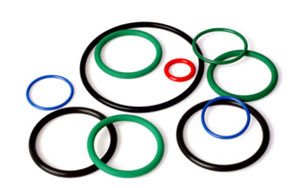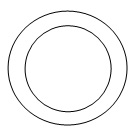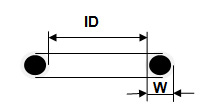


We supply standard size of O-Rings as per AS 568 (USA size standard), BS 1516 (UK size standard), JIS B 2401 (Japanese size standard), ISO 3601/1 (ISO size standard), DIN 3771/1 (German size standard), GB 3452.1 (Chinese size standard) and other custom size of Metric, Imperial sizes of O-rings on order in wide range of materials : NBR / FKM / EPDM / HNBR / VMQ (Silicone) / PTFE / PU
O-Rings is one of most popular sealing product and versatile seal due to its simple shape,O-Rings seals are circular rings of various cross sectional configurations installed in a gland to close off a passageway and prevent escape or loss of a fluid or gas and to provide protection against compression or wear in moving parts. It is the most basic form of sealing between two surfaces , O-Rings are successfully used in static as well as dynamic applications.
O-Rings is specified by three of its features: O-Rings dimensions, O-Rings material, and O-Rings hardness. Material and hardness specify the elastomeric compound and Shore A (durometer) hardness of the compound that is used to manufacture the o-rings. O-Rings dimensions are described by stating its inside diameter (I.D.) and its cross-section. Designing for o-rings depends on three major and interrelated variables: the operating conditions or environment the seal will experience, the gland geometry into which the seal will be installed.
O-Rings is also spelled as O'ring,"O"ring or oring. Standard O-Rings are available in various materials, sizes in metric and imperial international standards such as as AS568 , DIN ISO 3601 and JIS sizes , thus providing the quality assurance required to meet the world's most demanding applications of O-Rings.

When you order, we needs to know the inside diameter (I.D.), the cross section diameter (W), and the compound (rubber material)from which it is to be made.
ID= O-Rings inside diameter
w= O-Rings cross section
